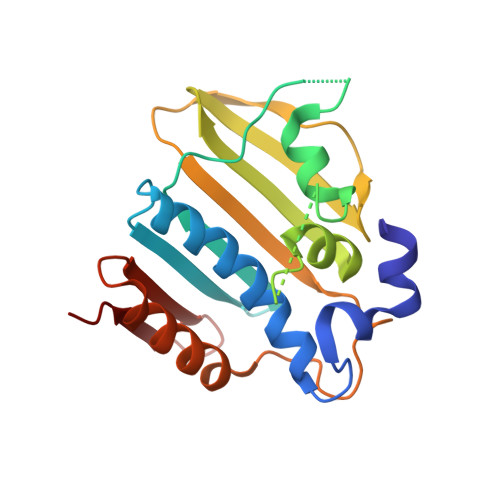DNA gyrase interaction with coumarin-based inhibitors: the role of the hydroxybenzoate isopentenyl moiety and the 5'-methyl group of the noviose.
Lafitte, D., Lamour, V., Tsvetkov, P.O., Makarov, A.A., Klich, M., Deprez, P., Moras, D., Briand, C., Gilli, R.(2002) Biochemistry 41: 7217-7223
- PubMed: 12044152
- DOI: https://doi.org/10.1021/bi0159837
- Primary Citation of Related Structures:
1KZN - PubMed Abstract:
DNA gyrase is a major bacterial protein that is involved in replication and transcription and catalyzes the negative supercoiling of bacterial circular DNA. DNA gyrase is a known target for antibacterial agents since its blocking induces bacterial death. Quinolones, coumarins, and cyclothialidines have been designed to inhibit gyrase. Significant improvements can still be envisioned for a better coumarin-gyrase interaction. In this work, we obtained the crystal costructures of the natural coumarin clorobiocin and a synthetic analogue with the 24 kDa gyrase fragment. We used isothermal titration microcalorimetry and differential scanning calorimetry to obtain the thermodynamic parameters representative of the molecular interactions occurring during the binding process between coumarins and the 24 kDa gyrase fragment. We provide the first experimental evidence that clorobiocin binds gyrase with a stronger affinity than novobiocin. We also demonstrate the crucial role of both the hydroxybenzoate isopentenyl moiety and the 5'-alkyl group on the noviose of the coumarins in the binding affinity for gyrase.
- UMR CNRS 6032, UFR de Pharmacie, 27 Bd Jean Moulin, 13385 Marseille Cedex 5, France. daniel.lafitte@pharmacie.univ-mrs.fr
Organizational Affiliation:

















